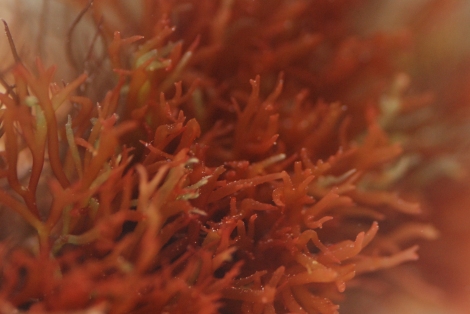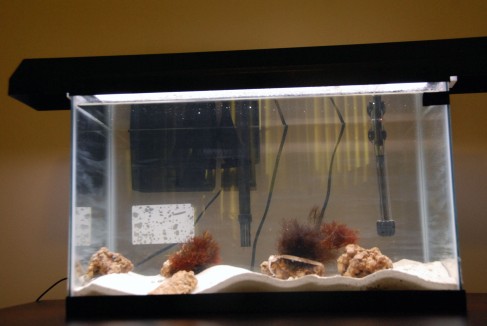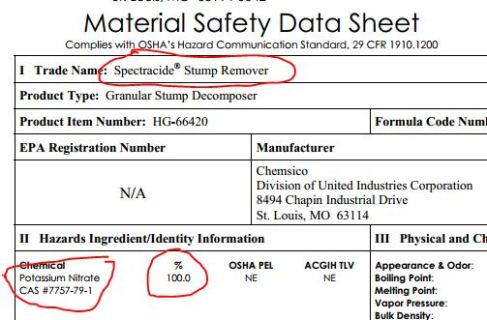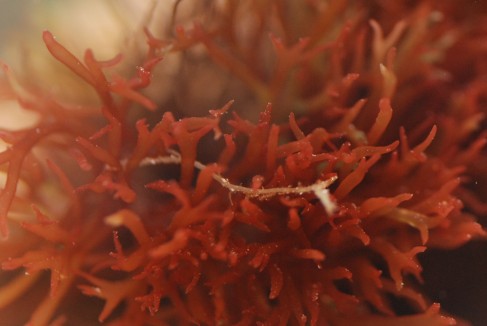It has been a week since Achilles got moved into the display tank. As expected, his diet remained a challenge. After about three days he started going after frozen brine shrimp and some nori, but he is not nearly as aggressive towards the food as other fish in the tank. I can’t stress enough the importance of a healthy diet for most tangs in general and Achilles in particular. I read complaints about ich and crypt issues with tangs all the time. Aquarists seem to go out of their way to treat them with all sorts of medications. But the truth is that these diseases exit in dormant to semi dormant state in every single tank. They only, however, cause major problems when the fish is so weak that their own immune system cannot handle it. Feed your fish right, with a variety of good food, and you will not have to deal with consequences. This means frozen food like brine and mysis shrimp daily, sheets of nori as necessary and flakes/pellets for snacks.
This brings me back to Achilles’s diet. The guy apparently really likes Gracilaria macro algae. No wonder, especially considering that the grass is indigenous to Hawaii as well, and is considered the favorite food for tangs. Since I cannot get a steady local supply of this type of algae, I’ve decided to start growing it at home. I’ve had two options to consider. The first one is to put this grass in the sump of my display tank, the second is to set up a separate tank just for the algae.
Benefits of the first approach are obvious:
- No extra equipment to get
- Lower overhead costs due to existing flow and temperature control
- Algae helps keeping nitrates and phosphates low in display tank
As appealing as those benefits are, unfortunately I could not go with the first option. Primarily, because this grass requires a good amount of nitrates in the water for it to grow rapidly, and I just cannot allow that much organic in the SPS dominated tank. Besides, I need to have control over how much algae is being produced in order to have a constant supply of food and it is easier to do in a dedicated tank. To complicate matters further, my sump was never designed to have an algae refugium in the first place.
The benefits of the dedicated tank option are just as appealing, but the drawbacks must also be considered:
- Extra room for another tank
- sufficient filtration, lighting and heating
- Need a way to maintain proper water level, especially if auto top off is not considered.
Eventually decided in favor of having a dedicated tank. Walmart had a good 10 gallon glass tank on sale for $14, other equipment was found at home and it includes:
- HOB filter for water flow and aeration
- 100w water heater
- 17w T5 light I had on my quarantine tank
- some dry rock and sand
Water temperature is set to 78F, light is currently on 24/7, salinity at 1.021-1.022.
What was important to realize, is that algae requires a constant supply of fertilizer to grow. The two most important algae feeders are Potassium and Nitrates. One could by premixed solutions such as Kent Marine Pro Plant, but this hobby wouldn’t be nearly as fun if we couldn’t try other alternatives. I will write another post one day about my Calcium and Magnesium supplements for my display tank, but for now I will just share my recipe for the plant food.
As mentioned earlier, the algae plant food has two main ingredients: Potassium (K) and Nitrates (NO3). Conveniently enough, both ingredients are present in several specific products designed for stump removal. My local Lowes caries Spectracide Stump Remover in 1 pound containers. Let’s take a look at it’s Material Safety Data Sheet:
100% Potassium Nitrate (KNO3)!
Another good ingredient to add is Magnesium, which is available as Magnesium Sulfate (MgSO4), sold as Epsom Salts at any pharmacy. I mix these components in following proportions:
- 60oz (1.75l) of water
- Potassium Nitrate – 54g
- Magnesium Sulfate – 10g
Started adding 5ml of the solution to my 10 gallon tank every other day. Algae seems to like it so far:
Hoping for noticeable growth within 2-3 weeks, at which point I should be able to start feeding it to my tangs.




